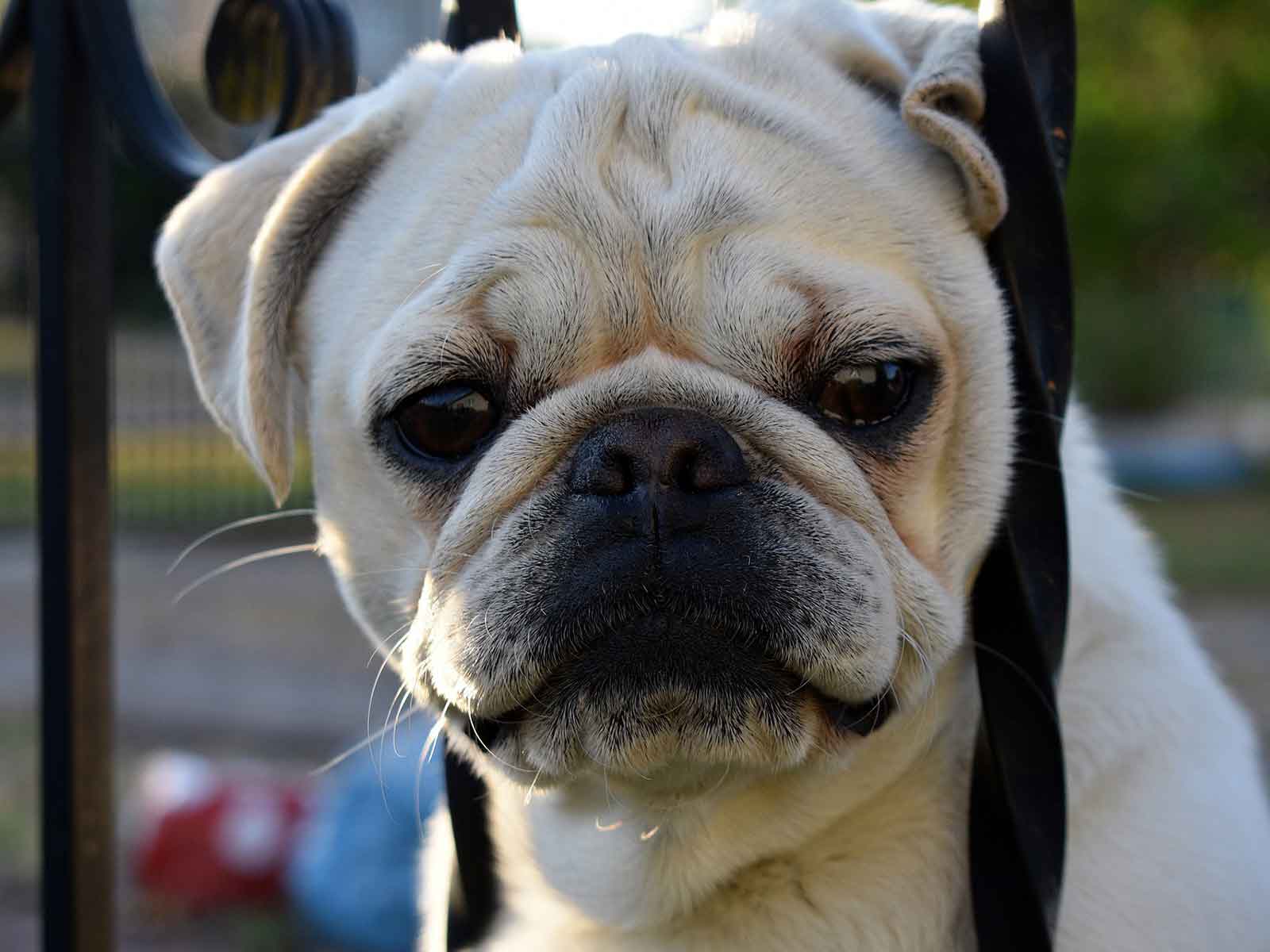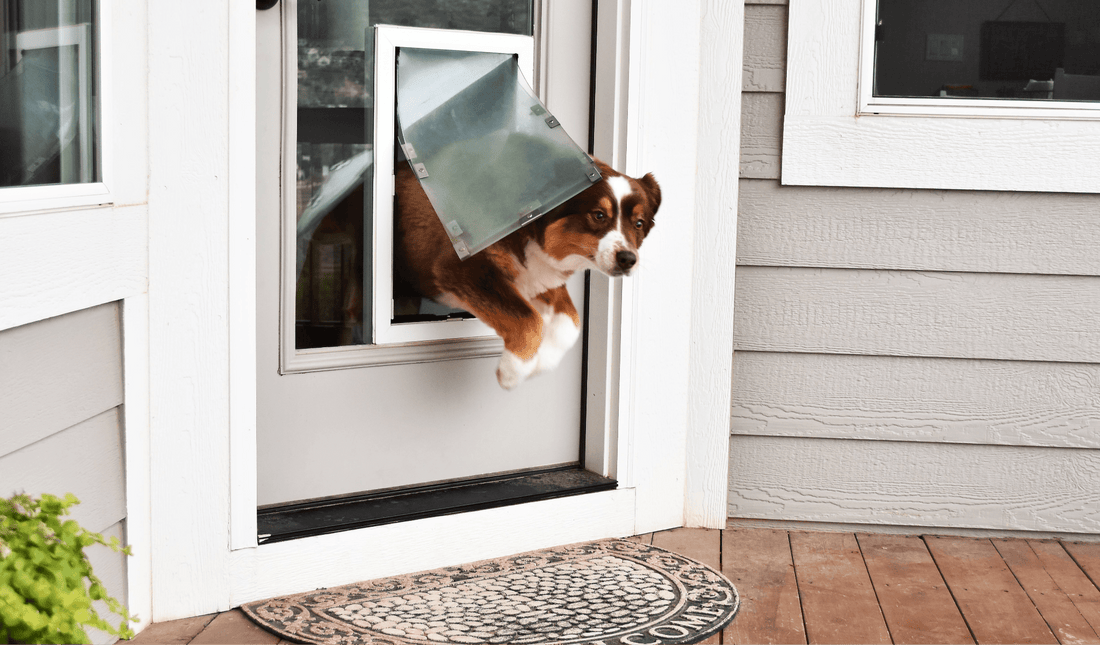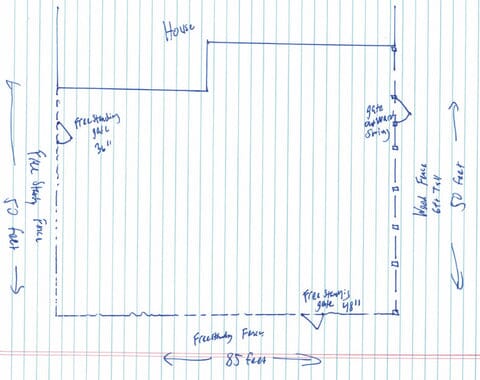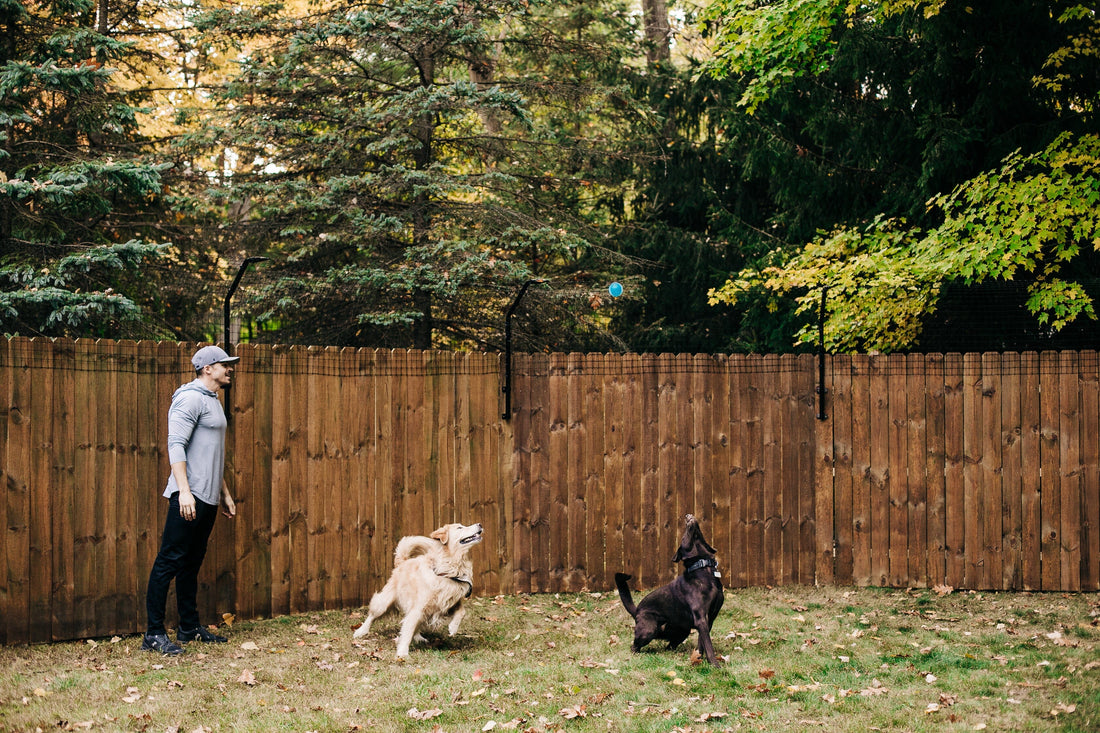Keeping a small dog contained within a fenced-in yard is essential for their safety and well-being. However, some small dogs have a tendency to escape through fences, whether by digging underneath, squeezing through gaps, or jumping over a short fence.
This can be a frustrating problem for pet owners, as it not only puts the dog at risk of wandering off and getting lost or injured, but it can also lead to damage to the fence or other property.
In this article, we will explore three effective ways to keep small dogs from going through fences. We will discuss dog-proofing existing fences, installing a new fence, and training and behavior modification. Each method has its own advantages and disadvantages and it's important to find the right solution (or combination of solutions!) that works for the specific needs of your small dog and your own lifestyle.
The first method we will talk about is dog-proofing your existing fence to prevent your small dog from digging under the fence or squeezing through gaps in the fence - these are the most common ways that small dogs escape fenced areas. But there are even options for small dogs that jump over fences! Dog Proofer offers a variety of fence modification solutions that are widely used. These options are easy to install solutions that are effective in preventing small dogs from escaping under, through, and over fences.
Method 1: Dog-proofing existing fences
Dog-proofing existing fences tends to be a cost-effective and straightforward solution for preventing small dogs from escaping under or through fences. It involves adding additional materials or barriers to the existing fence to make it more challenging, or even impossible, for the dog to dig or walk through gaps between pickets. Here are some popular methods of dog-proofing existing fences to prevent digging under or squeezing through gaps (plus a bonus option that prevents small dogs from jumping over a fence):
- Chicken wire: Bury a sheet of chicken wire along the base of the fence, extending it outwards at a 90-degree angle. This will prevent dogs from digging underneath the fence. You can also run the chicken vertically up the fence to prevent the dog from going through gaps as well. This is an easy, low-cost solution, but will not provide the durability necessary for dogs that are strong and determined!
- Lattice: Attach lattice panels to the existing fence. Lattice is a sturdy material, typically made of wood, that can be used to cover gaps (or even add height to some types of fence). This solution is great for covering gaps in a fence line, but will not necessarily prevent digging. A small dog that might be prone to chewing through the material may also be able to create larger openings in the lattice over time.
- Create a dig-proof barrier: You can create a “buried” barrier along the bottom of the fence to prevent digging. This can be concrete or heavy stone, for example. The best way to accomplish this type of barrier is to first dig a trench around the perimeter of the yard (at the base of your fence), then backfill it with concrete or stone. This creates a barrier that is challenging or impossible to dig through. However, this solution prevents digging only.
- Dog Proofer Wide Gap Barrier Dog Fence Kit: This is a durable and easy to install solution that can be used to dog-proof existing fences and prevent small dogs from escaping through fence gaps. It includes a heavy-duty welded wire mesh material designed specifically for use with dogs of all sizes. The mesh is rolled out and secured to your existing fence to secure gaps between fence pickets.

- Dog Proofer Dig-Proof Barrier Kit: This system can be used in conjunction with the Wide Gap Barrier Kit, or used alone if your fence does not have gaps. Using the same heavy-duty welded wire as the Wide Gap Barrier Kit, the Dig Proofer System is created by folding the wire into an “L” shape at the base of the fence. The bottom portion is staked flat against the ground with 12” long stakes. Then, the vertical portion runs slightly up the fence so that it can also be secured in place and prevent a dog from pulling the mesh away from the fence.
Bonus Recommendations:
If you have a short fence and a small dog that is particularly athletic and able to jump or climb over, then you might consider extending the height of your existing fence to prevent your small dog from jumping over your fence.
- Dog Proofer Vertical Fence Extension Kit: This system can be installed on a fence of nearly any type in order to increase the overall height of the fence by up to 3 feet. This extension of height should be enough to stop most small dogs from jumping over your fence. If your dog is also prone to digging, or your fence also has gaps the Dog Proofer line of products can be “mix and matched” to suit your needs.
- Dog Proofer Curved Fence Extension Kit: If you have a particularly escape-prone pooch that has learned to climb your existing fence, this system adds an arched top to the fence that stops them in their tracks!

It's important to note that when dog-proofing existing fences, you should take into account the size and temperament of your small dog as well as the layout of your property to choose the best solution. While some dogs are deterred by a barrier, others might look at it as a puzzle or challenge and continue attempted escape. For dogs like this, that are more determined, it is recommend that you select materials that are durable.
If you purchase a solution from a specialty retailer such as Dog Proofer, you can always reach out for assistance to ensure your system is installed properly for the best results.
Method 2: Installing a tall fence
If your yard does not already have a fence installed, you might consider installing a new one! If you do have a fence but it is not working to keep your dog contained, then you might consider replacing it with a taller fence, or a fence of a different type - but this can be a costly job!
The fence should be tall enough so that your small dog cannot simply jump or climb over it, but many people prefer a fence that is at least 6 ft tall for added privacy as well. A tall fence provides a physical barrier that can prevent most small dogs from jumping or climbing over. Here are some popular types of tall fences that can be used:
- Wood Fences: Wood fences are a popular option that provide a natural look and can be stained or painted to match the surrounding landscape, and may even provide some added privacy. They can be built up to 8 feet tall and can provide a sturdy barrier to keep small dogs contained.

- Vinyl Fences: Vinyl fences are a low-maintenance option that are resistant to rot, decay, and insect damage. They come in a variety of styles and have a smooth finish that make them difficult for a dog to jump or climb.
- Aluminum Fences: Aluminum fences are a lightweight and durable option that are resistant to rust and corrosion. They come in a variety of styles and can be built to just about any height. However, take care when selecting an aluminum fence as they often have gaps between their pickets.
- Dog Proofer Freestanding DIY Dog Fence: These fences are designed specifically with dogs in mind and the 4.5 ft tall version is great for small dogs! But there are taller options available as well. This dog fence option includes a dig-proof barrier to prevent small dogs from digging under the fence as well. It is a lower-cost alternative to traditional types of fencing and is virtually invisible from a distance if you have a spectacular view that you don’t want to be blocked by a fence. They can even be installed easily in front of an existing fence.

After building a new fence, it is important to ensure that the fence is properly installed and maintained to provide a safe and secure containment for your small dog. Additionally, it's important to check local zoning laws and regulations before installing a new fence to ensure that it meets any specific requirements (this is not generally necessary, however, with a Dog Proofer Freestanding DIY Fence, since it is not considered a permanent structure).
Method 3: Training and behavior modification
Training and behavior modification is another effective solution for keeping small dogs from going through fences. It involves teaching your small dog to stay within the boundaries of the fence through positive reinforcement and boundary training.
- Positive reinforcement: This method involves rewarding the dog for staying within the boundaries of the fence with treats, praise, or playtime. This helps to create a positive association with staying within the boundaries of the fence. Positive reinforcement can be used in combination with your preferred training method for the best results.
- Boundary training: This method involves teaching the dog to understand the boundaries of the fence through the use of visual cues, such as flags or markers (most common for invisible dog fences), and verbal commands. This helps the dog to understand where the boundaries of the fence are and to stay within them. When your dog responds correctly to the command, use positive reinforcement to let them know they are behaving correctly.
- Leash/Recall training: This method involves teaching the dog to walk on a leash and to come when called. This can be useful in the case of a small dog escaping through the fence, as you can quickly get the dog back under control. Again, in combination with positive reinforcement, you can eventually teach your dog to respect the fence boundaries in place.

Training and behavior modification requires patience and consistency. It can take some time to see the results - so stick with it! And don’t forget to set realistic goals and to work with a professional trainer if needed.
Additionally, it's important to consider the temperament and personality of your small dog when choosing the appropriate training method.
Finding a solution that works for the specific needs of your small dog and your lifestyle
In conclusion, preventing small dogs from going through fences can be a challenging problem for pet owners, but there are several effective solutions available. Dog-proofing existing fences, installing taller fences, and training and behavior modification are all methods that can be used to keep small dogs contained and safe.
Each method has its own advantages and disadvantages, and it's important to find the right solution that works for the specific needs of the small dog and the owner's lifestyle. It's also important to keep in mind that safety and training are important aspects to consider when choosing a solution, and to seek professional assistance if needed.
Check out Dog Proofer’s full line of safe and humane containment solutions today!





